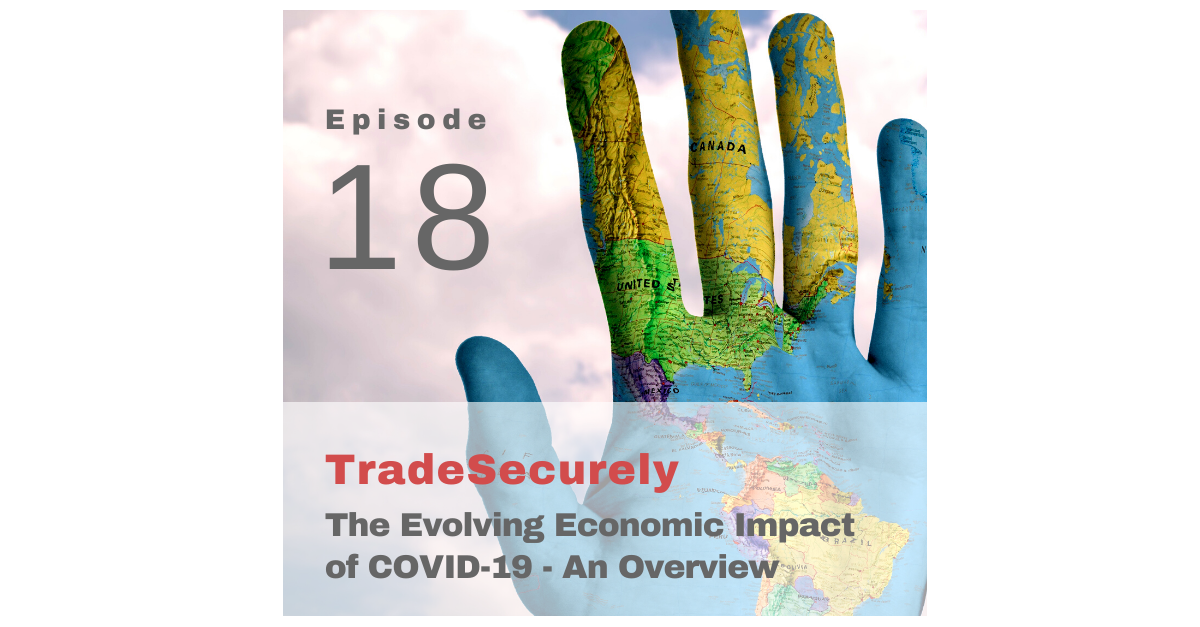[00:00:02] Speaker A: In business as in life, it's possible, if not probable, that the same or similar name can apply to more than one. And when it comes to business, it's important to know your client. And this is where what's in a name is everything. Welcome to from the trenches. This is a short episode series that's part of the Trade Securely podcast, where members of the receivables Insurance association of Canada, or as we like to call ourselves, react, share real stories from their businesses. I'm Janet Eastman, and today my guest is John Middleton. He's vice president complex risk at Hub International, a north american insurance brokerage with locations across Canada. Hi, John. Good to see you.
[00:00:43] Speaker B: Hey, Janet. Nice to see you, too.
[00:00:45] Speaker A: You ran into this situation where there was name confusion with the coverage on one of your clients customers.
[00:00:54] Speaker B: Yes.
[00:00:55] Speaker A: Tell us how this initial confusion came about.
[00:00:59] Speaker B: It was quite convoluted in terms of the corporate structure that the company had that our client was doing business with, and they thought that they were doing business with Company X, and so they requested a credit limit on Company X, and all their documentation was around Company X. But the purchase order actually came from company Y. And it was even more peculiar because the purchase order came from company Y, but it came with Company X, like their email domain address. So it was very convoluted as to who were you actually doing business with? And it seemed like they thought they were doing business with company X. But when we got to the claim scenario with the underwriter, the purchase order, it was determined it actually came from Company Y, and they never had an approved credit limit on company Y.
[00:01:45] Speaker A: Okay. And those names were very similar.
[00:01:48] Speaker B: Yeah.
[00:01:49] Speaker A: Okay.
So let's talk about when the claim was filed and the insurer denied the claim, and your client has a pending loss of, like, a seven figure loss. Right. Like something crazy.
[00:02:00] Speaker B: Yeah, it was quite alarming.
[00:02:03] Speaker A: Yeah, that's a bit scary.
How did you sort that out for your client?
[00:02:08] Speaker B: We were fortunate that we did at one point receive a financial package from the buyer, and that was necessary in order to establish the credit limit. And so we went back to that financial package and said to the underwriters, we got away from the claims department, went back to the underwriting department and said, listen, if you had the same information and you were trying to underwrite the credit limit on company Y versus company X, would you have come to the same conclusion and approved the same amount of coverage? And so after a bit of back and forth, the underwriting team did suggest back to us that, yes, you know what? They would have supported the credit limit on company Y. Had we submitted the request or had the client submitted the request on the appropriate company? And so then with that information, we went back to the underwriting claims department and said, listen, we've got the support from the underwriting guys. Can you now approve this claim? And they did so in due course.
[00:03:00] Speaker A: Okay, so without you being able to go back and talk to the underwriter and get that statement that, yeah, they would have approved this, would your client have gone bankrupt? Is it likely?
[00:03:15] Speaker B: Well, they would have taken a seven figure hit, and I don't know their financials closely enough to know if they would have sustained that hit, but it would have been a major hit to their equity, and it would have had a significant impact on their banking arrangements and their relationship with their lender. So would it have caused an insolvency? Possibly, but who's to say? But definitely a big hit to their equity.
[00:03:38] Speaker A: Yeah. So it would have been very painful.
Yeah. Okay, so let's talk a little bit about the fallout to the insurer because something did happen with the insurer. Can you explain what happened there?
[00:03:52] Speaker B: Yeah. So it was a bit awkward at the end of the day because the company was still solvent. And so our underwriter wanted to go after the buyer and try and recover on the loss, but all the documentation didn't align up with the credit limit. So they couldn't actually initiate legal proceedings against the buyer because the underlying documentation didn't support going after the buyer who issued the purchase order. So the underwriter, at the end of the day, decided that they couldn't go after recovery. So the impact for our client is their loss ratio will obviously be spiked and quite a bit higher, so future renewals could be impacted by that outcome.
[00:04:32] Speaker A: Okay, so my final question for you is very simple. What guidelines do you have to offer when you talk to your customers or your clients and say, okay, when you're trying to identify your customer, you got to do these things?
[00:04:51] Speaker B: Yeah, it's really getting quite tricky in the marketplace just with fraud and everything that's happening out there. And so we want to make sure our clients do get a purchase order from the buyer, that the buyer's email address ties into their corporate domain address.
Just simple things like that. Just make sure you know who you're dealing with and who you're doing business with and make sure that you do have a bona fide purchase order from that buyer, evidencing that they want to do business with you and then have everything line up with that. Make sure you've got your credit application. The information on the credit application aligns with what the buyer is telling you. Make sure your credit approval from the underwriter lines up with the information on the purchase order and that you invoice them accordingly, and that the shipping documents also all align with the name of the buyer. That's really critical.
We just want to make sure that you have an understanding of who has the payment obligation to you and make sure that that's where the credit limit is established. Sometimes when you're exporting, there may be other companies that you may have to deal with in terms of who you have to ship to because they may own the import quota to bring product into a market. And so your ultimate buyer may not necessarily be the party that you're shipping to. And so when those situations arise, it's really important that you document everything properly so that there's no misunderstanding as to who has a payment obligation and that you've got the appropriate coverage from the underwriter when you're conducting that transaction.
[00:06:15] Speaker A: Okay. So I guess in the end, this is one of those things that the expertise of the entire background that your customer or client might have from a receivables insurance person is very beneficial because they can run the line right through and make sure, or try very hard to make sure you're doing business with the person that is covered.
[00:06:39] Speaker B: That's correct. Yeah. Certainly part of the service we're trying to help offer our clients to make sure that they get paid for the shipments that they take.
[00:06:47] Speaker A: Yeah. John, very scary story. As you mentioned, it's a fraud thing. All kinds of things could be going on here, and you have to be much more diligent as the years go on. So thanks very much for sharing this story.
[00:07:01] Speaker B: Yeah, no worries. It was great to talk to you, Janet.
[00:07:03] Speaker A: Good to see you. Well, you too. We'll have more stories from the trenches on the Trade Securely podcast, and you can watch for them on our
[email protected], you can also find the Trade securely podcast on iTunes and on Spotify. You can follow us on LinkedIn and on X or Twitter and stay up to date on the trade credit insurance information, as we like to say at react. Be sure to cover your assets. I'm Janet Eastman. Thanks for listening.


